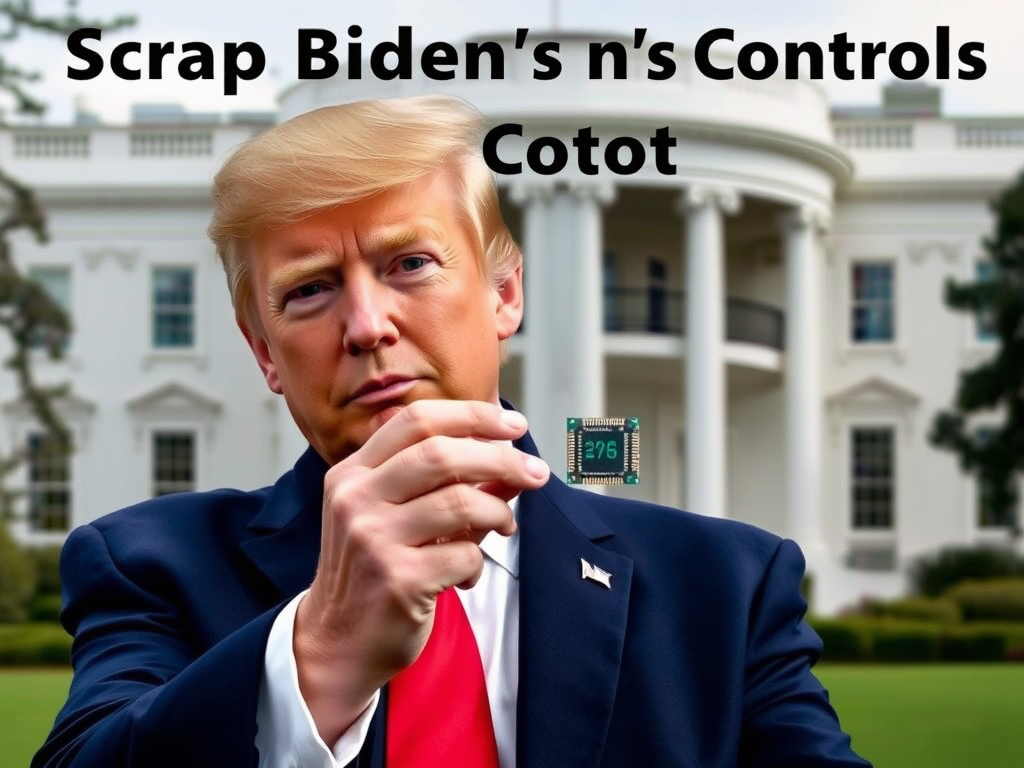The tech world is buzzing with speculation: Could a second Trump administration completely overhaul AI chip export policy, potentially dismantling the restrictions put in place by President Biden? The debate is raging: is this a bold move to unleash American innovation, or a reckless gamble that could hand our rivals a strategic advantage?
I. The Biden-Era Restrictions: A National Security Firewall?
The Biden administration’s export controls aimed to restrict China’s access to advanced AI chips, citing national security concerns. The logic was to slow down China’s progress in areas like military technology, advanced surveillance, and other sensitive applications. These controls, however, have been a source of frustration for many US chipmakers, who view China as a vital and lucrative market.
Potential Backlink Opportunity: Link to a reputable news source or government document detailing the specifics of Biden’s export controls. Example: “<a href=’https://www.example.com/biden-ai-export-controls’>Details of Biden’s AI Chip Export Restrictions</a>”
II. Trump’s Potential U-Turn: Unshackling American Innovation?
Sources close to the Trump camp suggest a potential shift towards a more laissez-faire approach, arguing that removing export restrictions would allow US companies to sell more chips, reinvest profits into research and development, and ultimately maintain a competitive edge in the global AI race. This aligns with a broader “America First” economic philosophy.
Potential Backlink Opportunity: Link to a think tank report or academic study that supports the argument that fewer export controls lead to greater innovation. Example: “<a href=’https://www.example.com/innovation-export-controls-study’>Study: The Impact of Export Controls on Technological Innovation</a>”
III. The Risks: Empowering the Competition?
Critics of this approach warn that lifting export controls could inadvertently accelerate China’s AI development, potentially giving them a decisive advantage in strategic areas. They also raise concerns about creating a dangerous dependence on the Chinese market for US chipmakers, making them vulnerable to political pressure and potential IP theft.
Potential Backlink Opportunity: Link to an article or report that details China’s AI ambitions and potential threats to US national security. Example: “<a href=’https://www.example.com/china-ai-threat-report’>Report: China’s AI Ambitions and National Security Implications</a>”
IV. The Geopolitical Chessboard: A Delicate Balancing Act
The decision on AI chip exports is a complex one, requiring a careful balancing act between economic opportunities and national security concerns. It’s a geopolitical chessboard where every move has potential consequences. Scrapping export controls could boost the bottom lines of American chip companies, but it also carries the risk of empowering a strategic rival.
Potential Backlink Opportunity: Link to an article discussing the broader geopolitical implications of the US-China tech rivalry. Example: “<a href=’https://www.example.com/us-china-tech-rivalry’>The US-China Tech Cold War: A Geopolitical Analysis</a>”
V. The Bottom Line: No Easy Answers
There are no easy answers in this high-stakes game. Any decision on AI chip exports will require careful consideration of the potential risks and rewards. The choices we make today will have a profound impact on the future of AI and the global balance of power. The world is watching.








